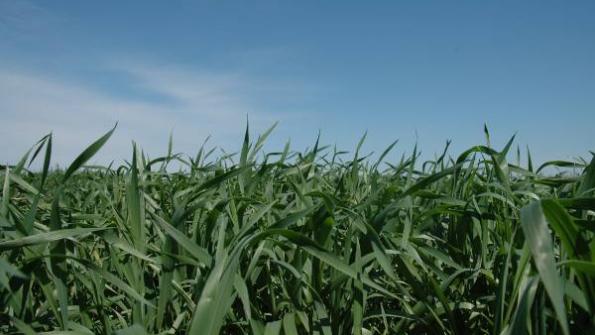
Fall applied fertilizer, especially for summer crops and particularly for nitrogen, may not be a good idea for Oklahoma farmers.
“It’s all about the temperature,” said Brian Arnall, assistant professor, precision nutrient management, at Oklahoma State University, during a fertility session at the recent No-till Oklahoma conference in Norman.
To prevent or at least limit nitrification, “it has to freeze,” Arnall said. “Up north they need to use a nitrification inhibitor.”
Average wintertime temperature in Oklahoma is 39 degrees. In Illinois, the average is considerably lower, 28 degrees and Minnesota is 16 degrees, so fertility practices that work well farther north may not be successful in the Southwest.
If you are enjoying reading this article, please check out Southwest Farm Press Daily and receive the latest news right to your inbox.
“If they apply nitrogen with a nitrification just before the soil freezes, nitrogen doesn’t move,” he said. “We also have potential for wet winters. Wintertime precipitation in Oklahoma ranges from 2 inches to 16 inches. “We’re all over the place and we can get heavy rains. For the last two winters, we have had very little moisture but in a wet winter we can see a lot of nitrogen movement. We often get a lot of back and forth with winter moisture.”
Nitrogen dynamics plays a role in application timing. It is highly mobile. “That’s why we don’t apply it in the fall for summer crops and why we need to make split applications for wheat.”
Various sources of nitrogen, under the right environmental conditions, may change. NH3, in the presence of moisture changes to NH4 and that transforms into NO3 via nitrification and “will move with soil solution. If we have soil solution and the soil solution moves, NO3 will move with it.”
Arnall said nitrification is a microbial process “driven by temperature and moisture. It converts faster in a warm, humid environment and it converts even faster as conditions warm up.
“Up north, with frozen soils and a nitrification inhibitor, fall application of nitrogen is an acceptable practice.” That may not be the case within 10 years, however, because of environmental pressures.
Phosphorus and potassium may be less prone to move following fall application. “Fall application of phosphorus is not as bad an idea, but soil pH and calcium levels will affect it.”
Arnall said the most soluble form of phosphorus will convert to the most insoluble form. “Phosphorus is available the first day it is applied. Availability diminishes after that, but it needs moisture to dissolve and get into the system.”
Potassium “is an even better choice for fall application. It does not move. (Arnall says one caveat to the immobility of potassium is with sandy soils where it can leach.) Oklahoma soils are rarely deficient in potassium. One exception could be soybeans and high-yielding cotton.”
The primary concern for upfront fertilizer application, Arnall said, is whether it gets rained out. He likes a split application for wheat. “Early in the season, the crop can’t use all the fertilizer and will use only what it needs. I recommend split applications, which will save money in the long run.”
Hailin Zhang, Regents Professor, Soil Fertility/Chemistry and Director of Soil, Water and Forage Analytical Laboratory, at OSU, said producers should understand that fertilizers “go through physical reactions” after application. “Fertilizers are chemicals and are involved in chemical reactions. Some of those are biologically mediated.
“Farmers can manage fertilizers better,” he said, “if they know their behavior.
You might also like:
About the Author(s)
You May Also Like






